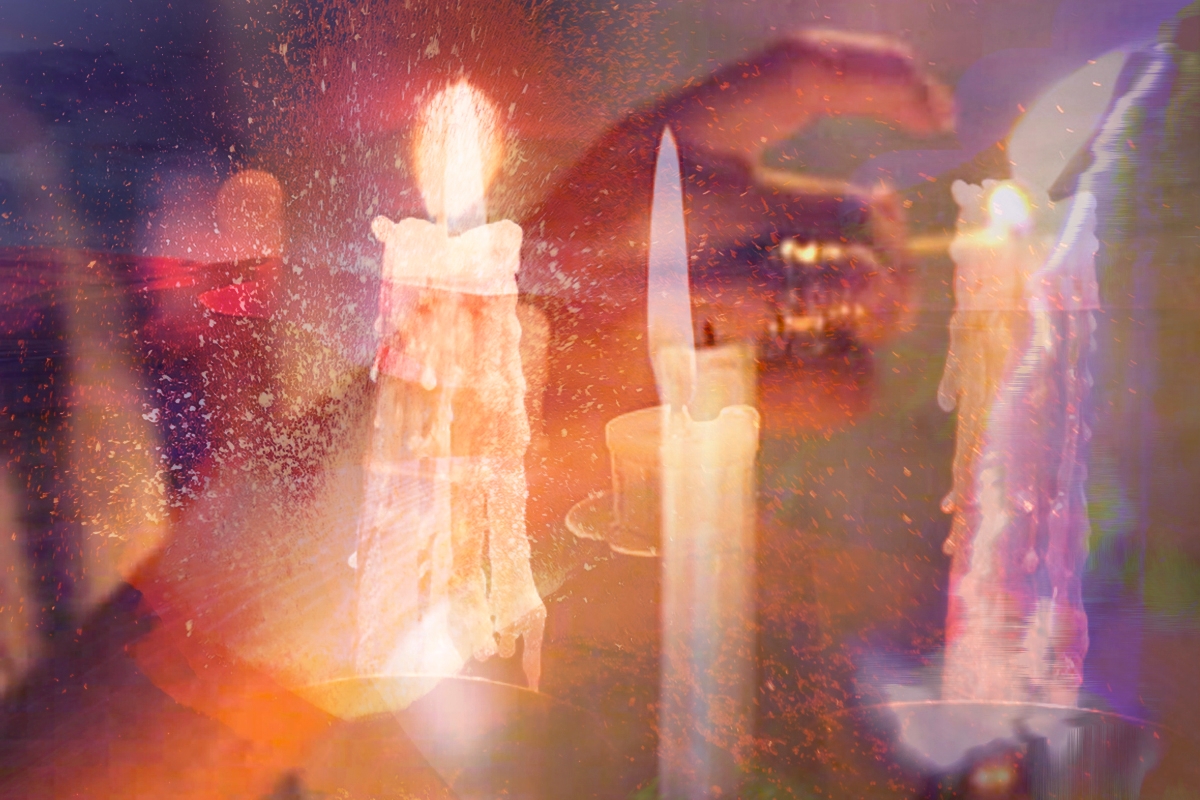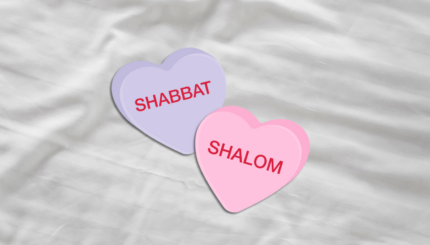Some meditators sit on the same cushion in the same place every day. When that happens, not just the practice but the place becomes holy to them.
Jews who observe Shabbat enter not only a place of meditation, but a world of meditation that lasts 25 hours from Friday sunset to Saturday starlight. Sabbath observers live in this special world on the same day each week, whether they are sitting or walking, eating or singing, making love or praying. Doing this week after week, the day and the cycle of time itself become holy.
In this way, Shabbat creates a circle, returning us again and again to a particular state of consciousness that awakens when we light candles or bless the wine or sing Lecha Dodi on Friday evening, and continues until we perform the Havdalah ritual on Saturday night.
Abraham Joshua Heschel famously described Shabbat as a “cathedral in time,” and it is hard to imagine a more splendid cathedral. But you don’t have to be religious, or even believe in God, to taste this. Theodor Adorno, the 20th century German Jewish philosopher, gave us a perfectly secular explanation of how Shabbat works:
With your help, My Jewish Learning can provide endless opportunities for learning, connection and discovery.
To children returning from vacation, the home is new, fresh, festive. But nothing has changed in it since they left. Only because the duties were forgotten, of which every piece of furniture, every window, every lamp is otherwise a reminder, does the Sabbath peace once more repose. (Minima Moralia, “Second Harvest,” p.72)
For Adorno, Shabbat not only transforms the world, but gives us a taste of redemption: “Not otherwise will the world appear, nearly unchanged, in the steady light of its day of celebration, when it no longer stands under the law of labor, and the duties of those returning home are as light as vacation play.” By lifting the shadow of labor, Shabbat becomes me’ein olam haba, “a taste of the essence of the coming world.” Or as we say in the Grace After Meals, “May the merciful one let us inherit a world that is entirely Shabbat.”
But if Shabbat momentarily lifts the world from under the law of labor, it does so by putting the world under a blanket of laws about how not to labor. The Talmud describes 39 categories of work prohibited on Shabbat, and adds layers of additional prohibitions — metaphorically called fences — that are meant to keep us from accidentally doing any of them.
These kinds of work all change the physical state of something — cooking, weaving, slaughter, fire, and writing. The rabbis defined these categories by the kinds of work that were done to build and maintain the desert sanctuary — the mishkan, literally the place of divine dwelling. The suggestion here is that our work during the week should build a sacred space for divinity.
If you’re familiar with the innumerable hyper-detailed laws about Shabbat observance, this way of looking at Shabbat may seem fantastical. Observant Jews, for example, may refrain from even touching an object on Shabbat that might be used for work, lest they come to use it for some prohibited activity. The details of these and other laws can easily make a person feel separate from others and judgmental of them, while inducing a sense of anxiety in those who try to fulfill all of them. And yet I can attest that when I most deeply observe these rules, I experience an enormous feeling of letting go, of moving through the world as a kind of immaterial spirit.
How can a person shift their spiritual framework so that the potentially obsessive-compulsive way of observing the rules dissolves into a liberating experience of redemption? For me, the transformation of Shabbat comes when I stop thinking about how God or Jewish law or other people might judge me, and focus instead on how the experience of Shabbat releases me — from judging the world, from manipulating it, from measuring everything in terms of what I need or want. (Practicing in a supportive community also makes a huge difference.)
In any case, taking on all of the Shabbat restrictions is an advanced practice. Beginners can still experience the transformative potential of Shabbat by picking one thing they won’t do on Shabbat, even if they want to. For example, refrain from just one specific activity, like writing or driving or cooking or using a smartphone. The key here is, in some small way, letting go of the human ability to control the world.
One amazing aspect of observing such rules is that we simultaneously become more aligned with other animals (by refraining from human creativity) and more aligned with God (who refrained from creating on the seventh day). On Shabbat, we stretch in both directions to connect more deeply to the fullness of the more-than-human world.
As we say in the kiddush blessing on Friday night, Shabbat is a zikaron l’ma’aseh v’reishit, a remembrance of the act of creating, a unifying of our consciousness with both Creation and Creator. To receive that consciousness, it’s not enough to stop doing things we call work. We are also called to celebrate. We begin the celebration of Shabbat with the lighting of candles and the recitation of the kiddush prayer over wine. (Jewish rituals use wine or grape juice to shift from regular time to holy time and back because wine itself is something that shifts our consciousness.)
That consciousness also doesn’t just disappear when Shabbat ends. One interpretation of the custom of lighting two candles Friday night but a braided one with two or more wicks on Saturday night is this: the two candles standing separately at attention invite us to pay attention as we enter the world of Shabbat, while the woven candle of Saturday night reflects the unifying consciousness we have cultivated over the course of the day.
This is what the Jewish mystics meant when they taught that the Sabbath is a fountain that waters the gardens of the six other days of the week. Shabbat doesn’t transform only the hours that we observe it, but all the time that is not Shabbat as well. Shabbat makes the cycle of time itself holy.
Shabbat is a weekly opportunity to practice living in redemption. It initiates us into a redemption that is not just utopian, but a blueprint for the here and now. It is gives us practice for the grand Shabbat of the Shmitah or sabbatical year, when the land gets to enjoy its own Sabbath, free from agricultural manipulation or control. In this way, Shabbat orients us toward a redemption that could transform the face of the planet.
Here’s a custom we do every Friday night in my home, which you can do to keep the vision of redemption front and center. Begin kiddush by reciting this verse from Genesis, which comes right before the verses quoted in the prayer book: “And God saw everything that God had made, and here: it is very good.” (Everyone at my table shouts together the last words in Hebrew: “Tov me’od!“)
To see the good in everything — not how it is good for you, but how each person, each place, each living being, is good in itself. To see the world as goodness itself already opens us to relinquishing control. That can be a very sweet taste of the coming world, the world that we describe as being “entirely Shabbat.”
Want more? MJL’s “Discovering Jewish Spirituality” email series will guide you through authentic Jewish methods of bringing spirituality into your everyday experience. Sign up here.
Enhance your spirituality journey by joining our weekly Jewish Meditation Moment for a brief Jewish teaching followed by a guided meditation.
Sign up for My Jewish Learning’s RECHARGE, a weekly email with a collection of Shabbat readings and more to enhance your day of rest experience.



